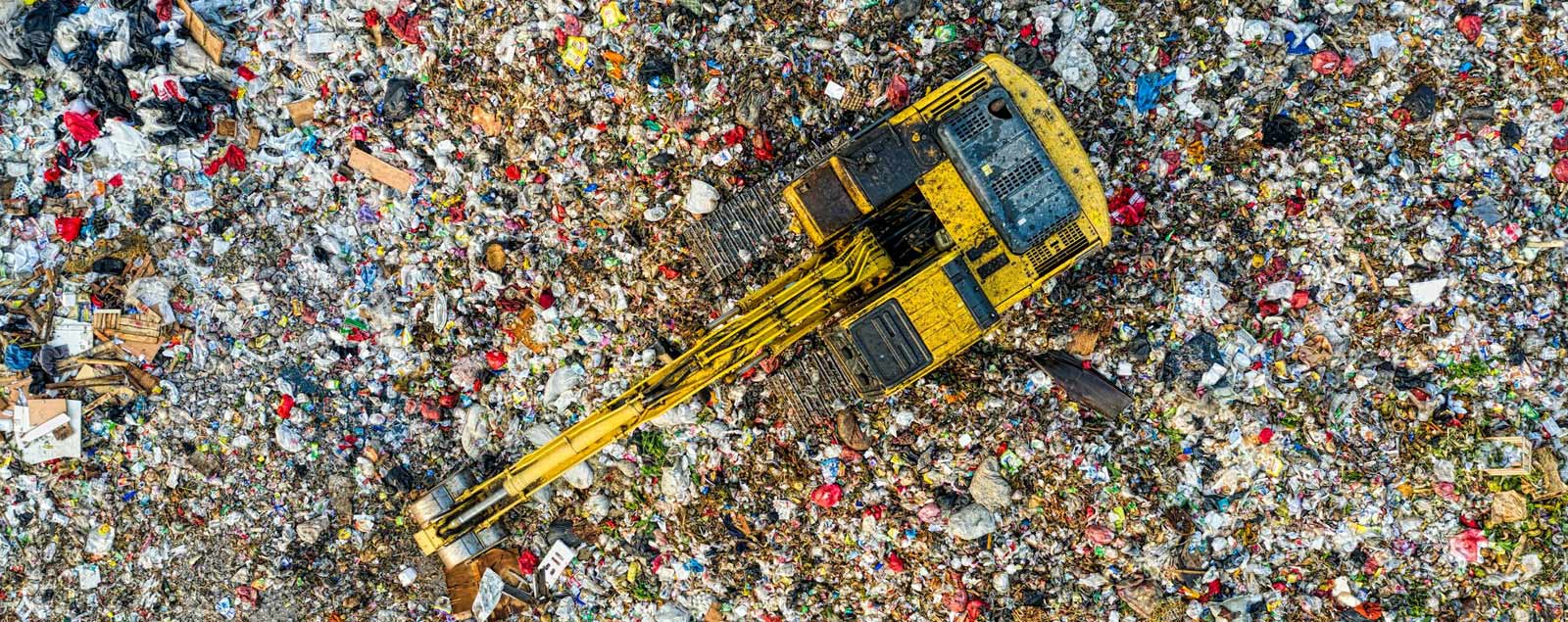
Landfill waste doesn’t just go away. It could spell disaster for the health of our planet
Once something has been used and disposed of, we tend to forget about it pretty swiftly. As soon as rubbish hits the bin, we’ve already moved on to the day’s next task, but taking an ‘out of sight, out of mind’ approach to waste can be dangerous, especially when it comes to the state of the climate.
Businesses concerned with sustainability must take a more mindful approach to waste management, and consider what happens to our waste after it’s left our hands. Doing so allows us to make more responsible decisions about managing waste in a greener, more sustainable way.
With that in mind, let’s explore what happens to our waste once it goes to landfill.
Understanding landfill waste
As the most traditional form of waste disposal, landfill is also the least sustainable. First, waste is transported to a landfill site. Vehicles are weighed both on arrival and departure to calculate the tonnage of waste disposed, as landfill operators are charged a Landfill Tax based on the weight of waste.
After offloading, waste is spread out and compressed to reduce volume. The waste is deposited in layers, with soil and other materials covering it daily to minimise odours and vermin infestation.
Over time, organic materials in the landfill break down via anaerobic decomposition, which occurs when there is an absence of oxygen. This is where sustainability concerns truly come into play, as anaerobic decomposition releases methane which is a potent greenhouse gas.

The environmental impact of landfill sites
Having long been recognised as a significant contributor to the climate crisis, landfill sites harm the environment in several significant ways. For one thing, the UK is running out of landfill space, with reports back in 2021 saying there was less than 7 years of landfill capacity remaining.
Methane emissions from landfill sites also contribute a lot to climate change, as a significant portion of landfill methane still escapes into the atmosphere. Leachate is another key concern. This potentially harmful liquid is born from decomposing waste, and can contaminate soil and water suppliers, posing a risk to both the environment and human health.
Safety measures at landfill sites
Because it is well known that landfills can cause significant environmental damage, many modern UK landfill sites come equipped with safety measures in place. Chief among these are systems designed to capture methane. This gas can be used to generate electricity, helping to offset some of the environmental impacts.
Similarly, UK regulations require landfill sites to have systems in place to collect and treat leachate to prevent soil and water contamination.
However, despite these efforts, it is estimated by the government that landfill still accounts for around 4% of the UK’s total greenhouse gas emissions, and 14 megatons of CO2 every year.
Moving away from landfill
Sustainability efforts are increasingly focused on moving waste management away from landfill reliance. These efforts are partially financially motivated, as the cost of landfill continues to rise with the Landfill Tax. In 2023, the standard rate of Landfill Tax was £102.10 per tonne, up from £96.70 the previous year.
Initiatives to lessen our reliance on landfills have included waste reduction, recycling and reusing, and championing alternative waste disposal methods. Investing in sustainability must include effective waste management.

Contact Everflow today!
At Everflow, our goal is to make your utilities simpler. We ensure you get great-value contracts that are tailored to your needs and easy to manage.


